The year 2022 is a special year for Volvo Malaysia because it marks the 55th anniversary for the Swedish marque’s presence in Malaysia.
Not only that but it also marks 55 years since the first ever locally assembled Volvo first rolled off the assembly line, which was the Volvo 144 (pictured below).
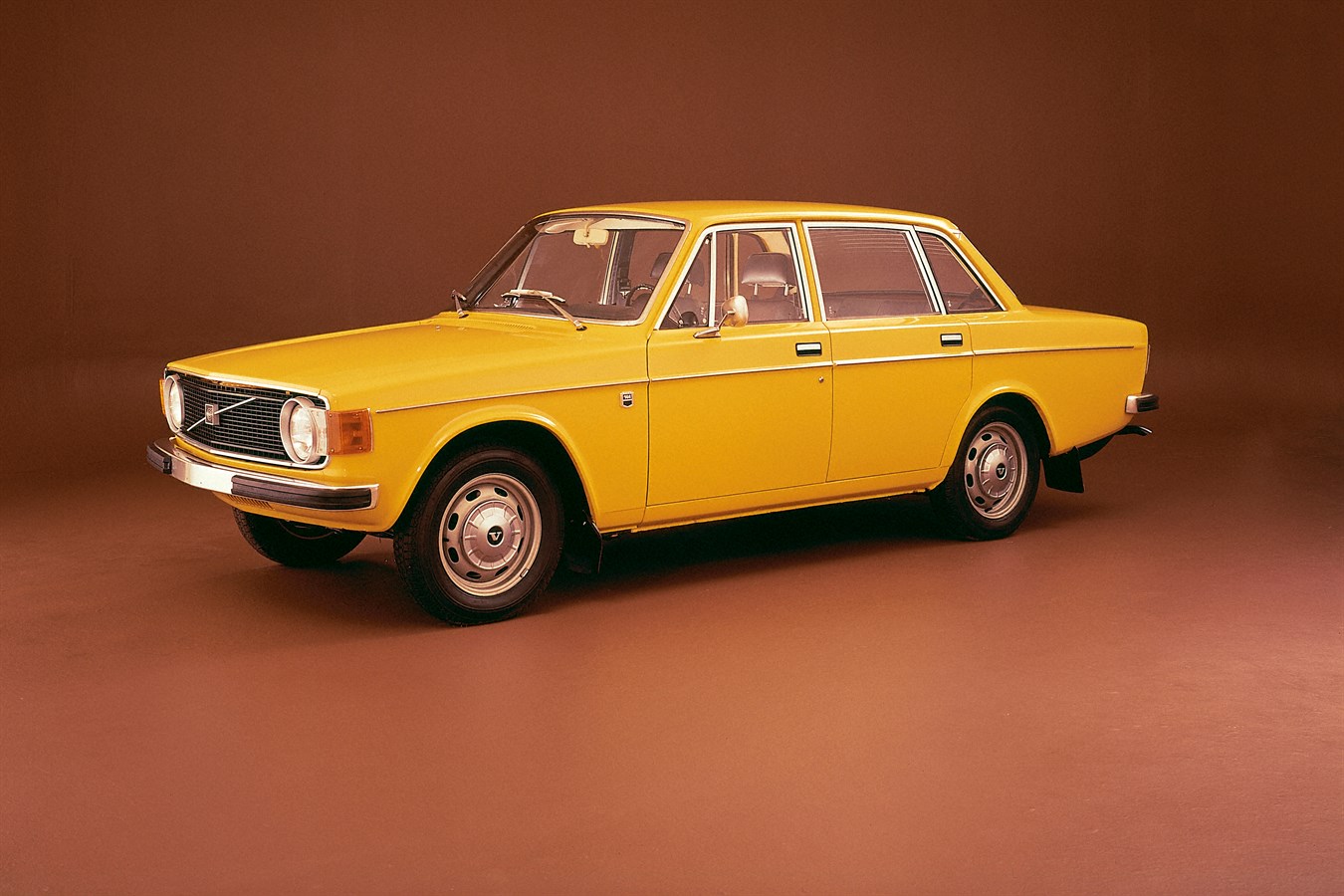
And 55 years later, Volvo Malaysia has once again made history by introducing the first ever locally assembled all-electric car – the Volvo XC40 Recharge Pure Electric.
The name of the car is painfully long, so for the sake of this article, let’s just call it the Volvo XC40 RPE, or RPE.
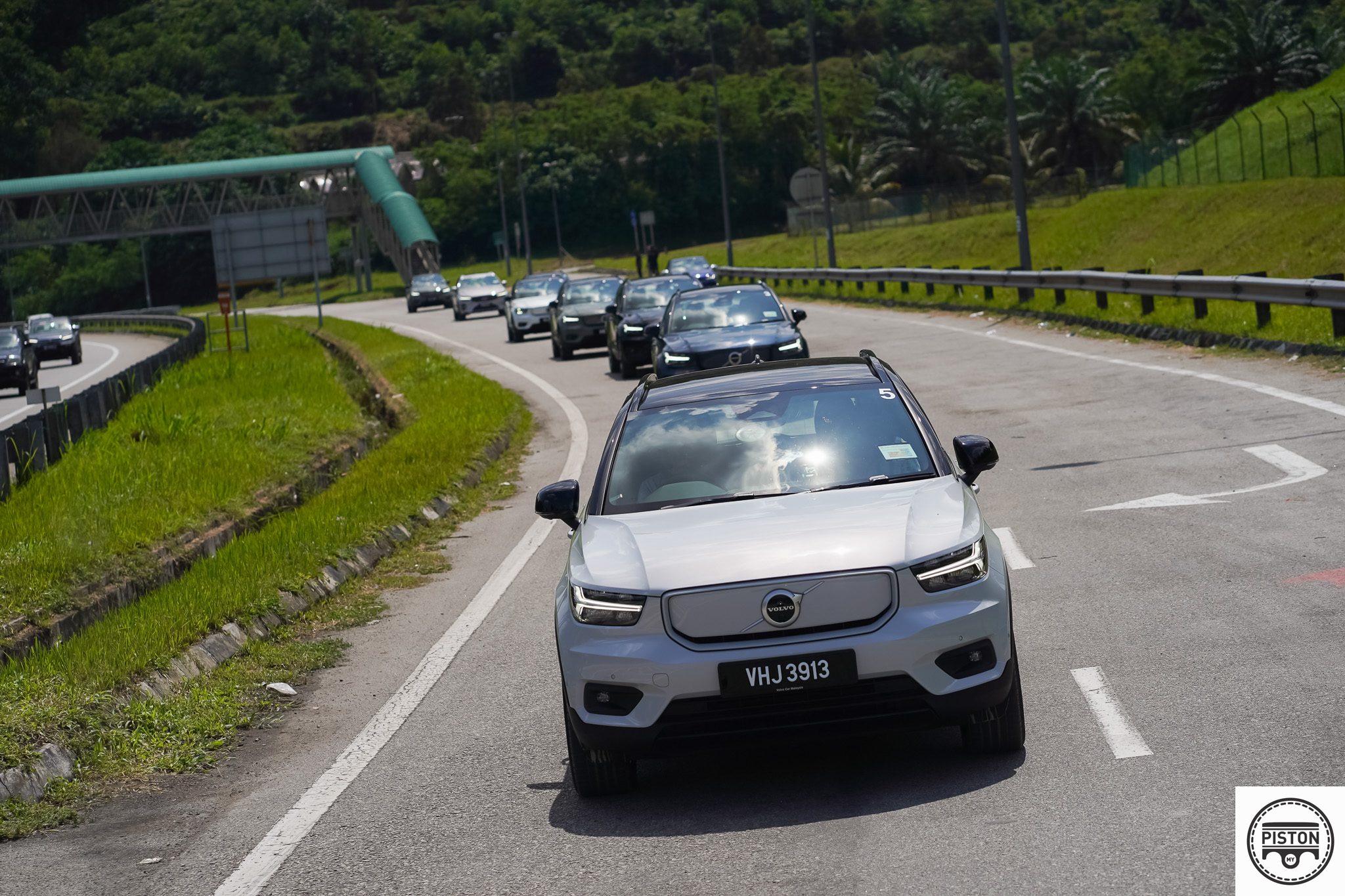
We recently test drove the car during a Volvo organised drive to Janda Baik and back, which gave us plenty of drive time to sample its electric capabilities, range and overall look and feel.
Let’s first begin with its design.
Current XC40 Recharge owners will recognise the overall silhouette, but there are some key differences.
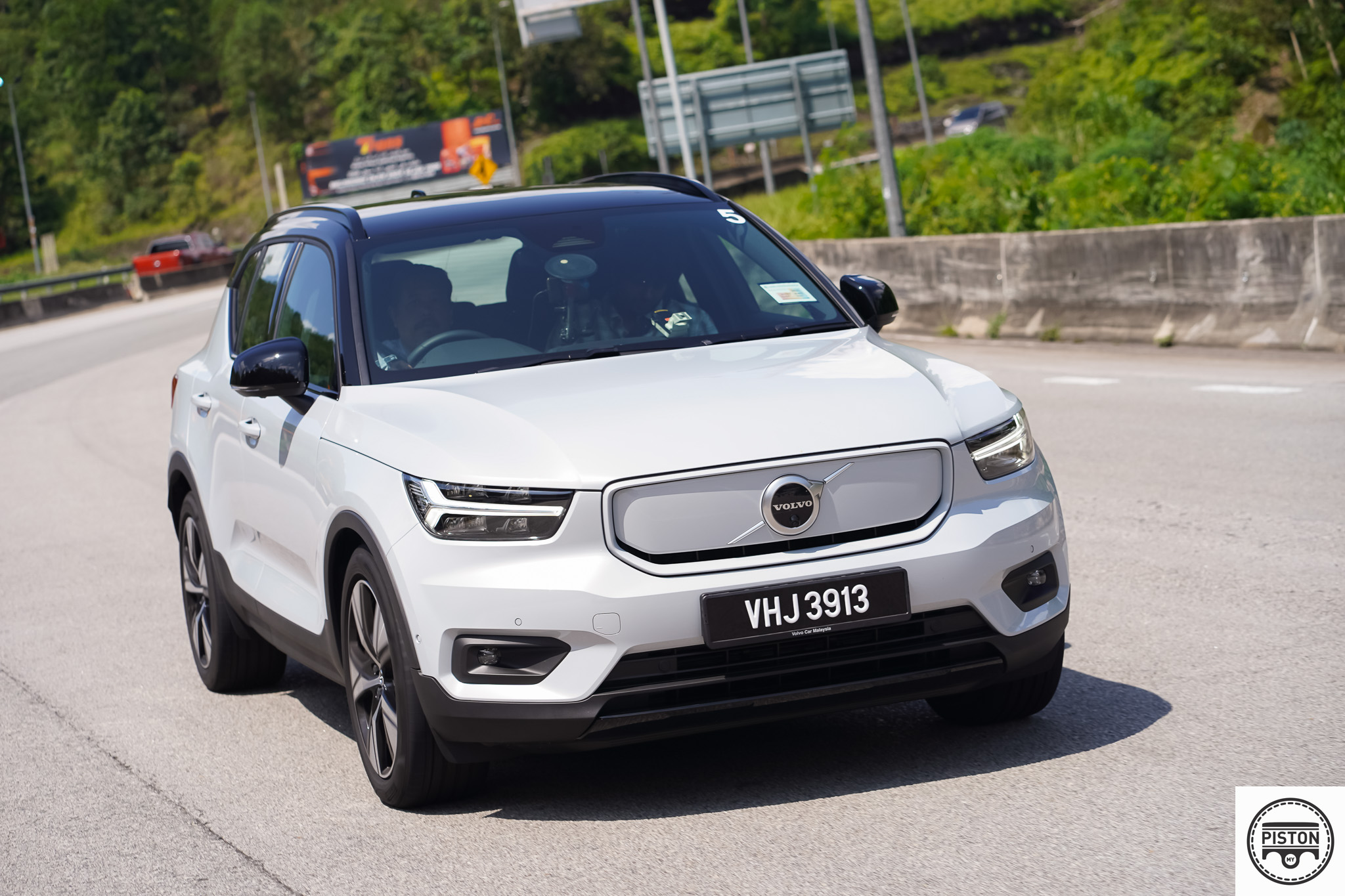
There is no need for a grille anymore since there is no engine to cool, so in its place a plastic panel that is thoughtfully painted in the same colour as the body, giving it a very unique touch and immediately identifying it as the all-electric sibling of the XC40 line-up.
And then there is the obvious omission of the tail pipes, giving the rear of the car a tidy look when compared to its fuel guzzling sibling.
Step inside and it’s business as usual for a Volvo. Except that it’s not. Because in the XC40 RPE you don’t have to start it to drive it. There’s no button to push or key to twist, there’s a simple press of the brake pedal, a gentle push of the gear lever to either D or R, and you’re off.
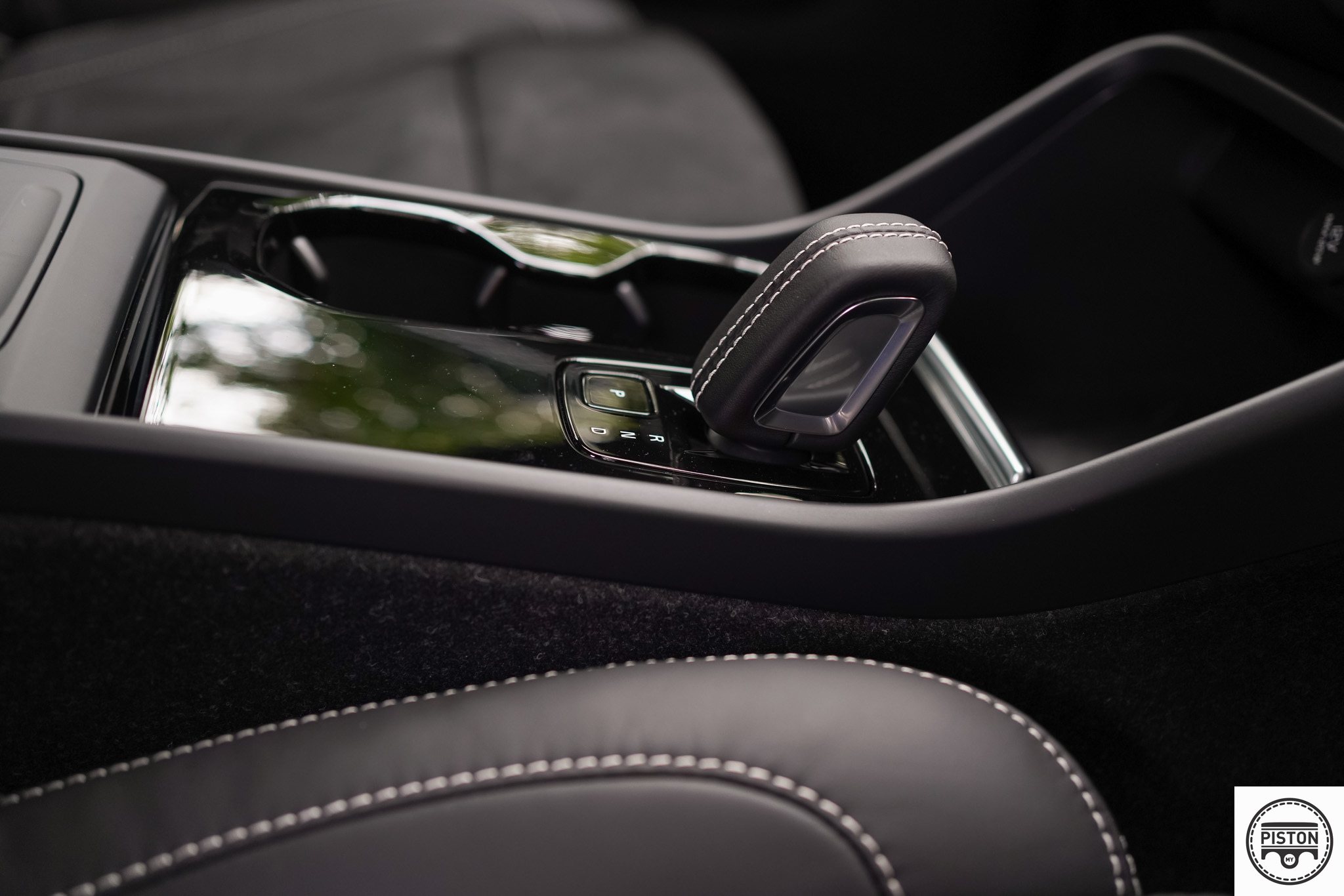
That’s an easy solution but one that we need to get used to, but after some time, it had me wondering why no one else had ever thought of that.
The first thing that catches your eye as you sit inside is the steering wheel and how basic it looks. The buttons are minimalistic and one could argue that it looks cheap, but it looks the way it does so as not to distract the driver.
Just behind the steering wheel is a gigantic 12-inch display that takes over meter panel duties. It displays the usual info such as speed and range and charge levels, but because it is one giant screen, it can also switch to becoming a giant navigation screen with the aforementioned data neatly tucked away but within reach of the eye.
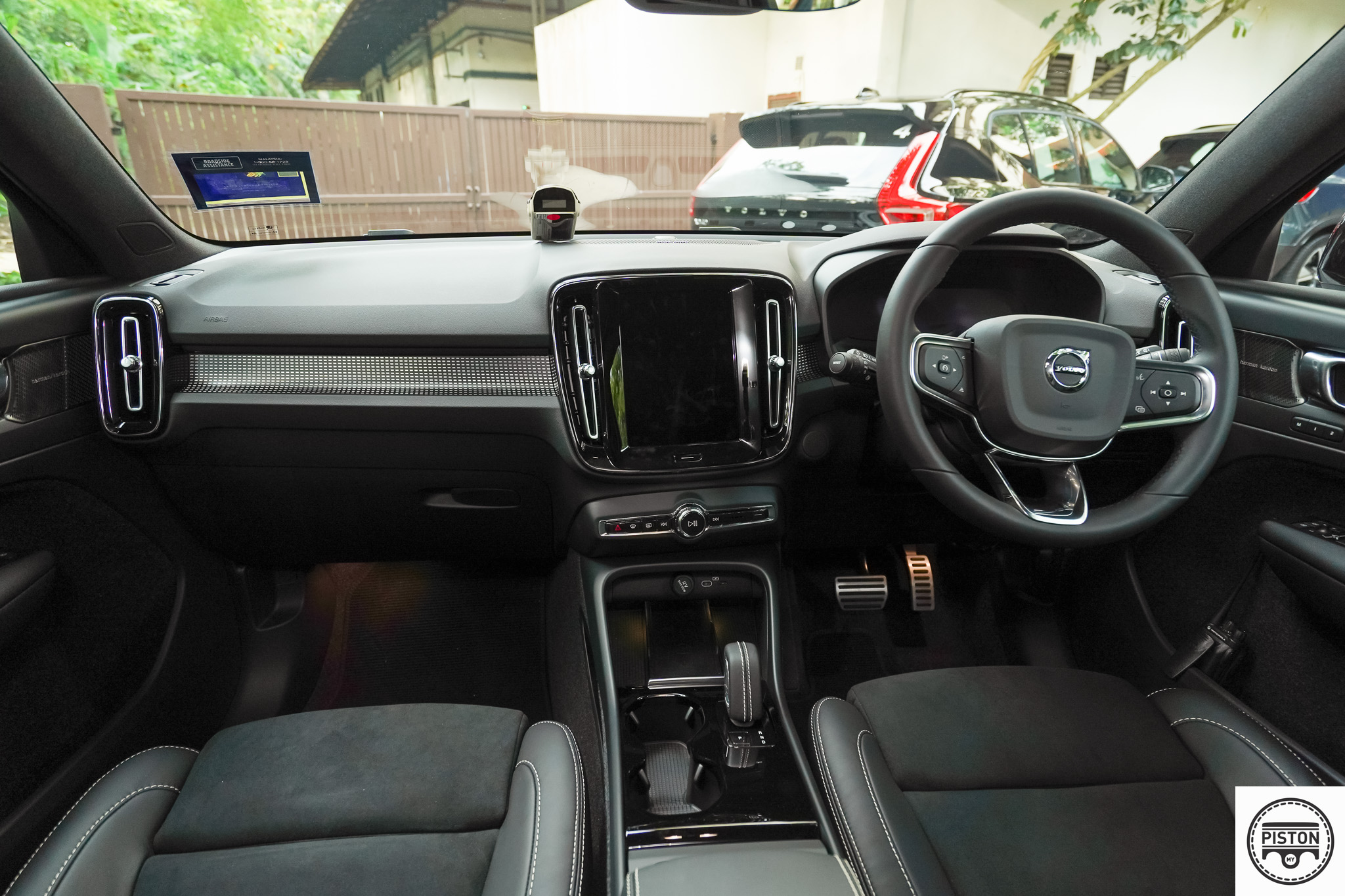
To the left of the steering wheel is a 9-inch vertical centre display (Volvo calls it portrait format) that houses everything you need while in the car – navigation, entertainment, air-conditioning controls and car settings.
The XC40 RPE also offers Google Assistant which lets you ask for directions, play music and make calls and even ask for the closest restaurants, all by saying “Hey Google” to get started.
The overall look and feel of the interior of the XC40 RPE is rather minimalistic. I particularly loved the 13-speaker Harmon Kardon premium sound system which comes standard and gives your music depth and rich bass.
The carpets are made of recycled materials while overall quality is fantastic, as it should be of a Volvo.
The seats may look thinly padded but offer decent support and come with memory function.
I personally found that rear seats to be cramped and the back rests too upright to get decently comfortable, but this is a small Volvo after all.
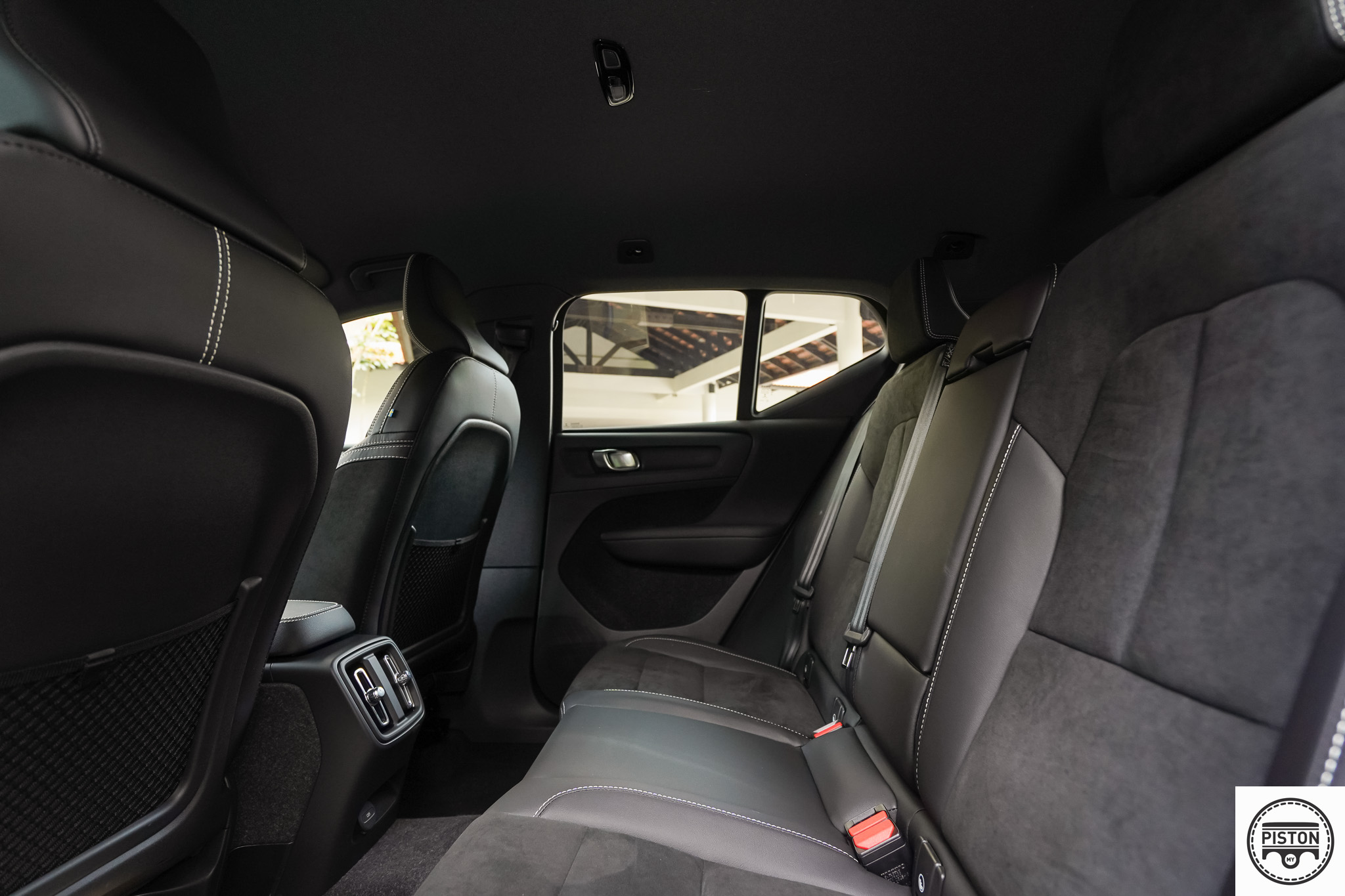
But a small Volvo doesn’t mean that it is devoid of space. Under what would usually be the bonnet is a small storage area consisting of two sections – the top section is perfect to store the charging cable and a small gym bag (the Mercedes EQA could learn a thing or two about storage from the XC40 RPE) while the boot offers 419 litres of storage space. That can expand to 1,295 litres with the rear seats folded down.
So how does it drive?
Fantastic to put it lightly.
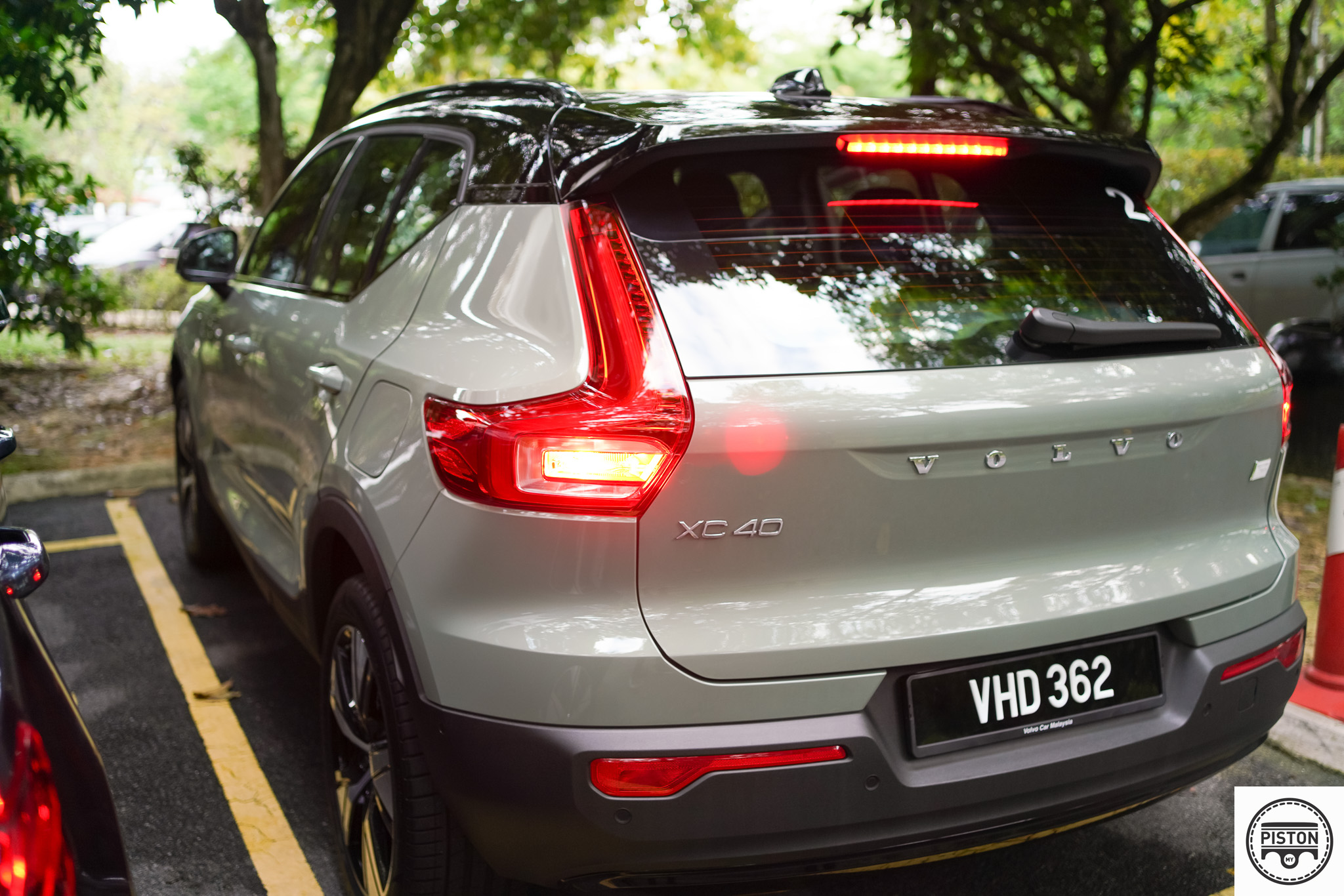
Lets get the facts and figures out of the way first. The XC40 RPE available in Malaysia comes in Twin Motor format, which means there are two electric motors placed in the front and rear axle.
These motors give the XC40 RPE an AWD format and gives the car a phenomenal 408hp and 660Nm of torque. The sprint to 100km/h is seen off in just 4.9 seconds. A decade ago, these figures would have given this Volvo supercar status.
But it is still a car tuned for comfort so the suspension is on the softish side and you feel the body roll if you dive into corners at high speed. So you still have to watch your right foot and need to keep your inner child at bay when driving the RPE.
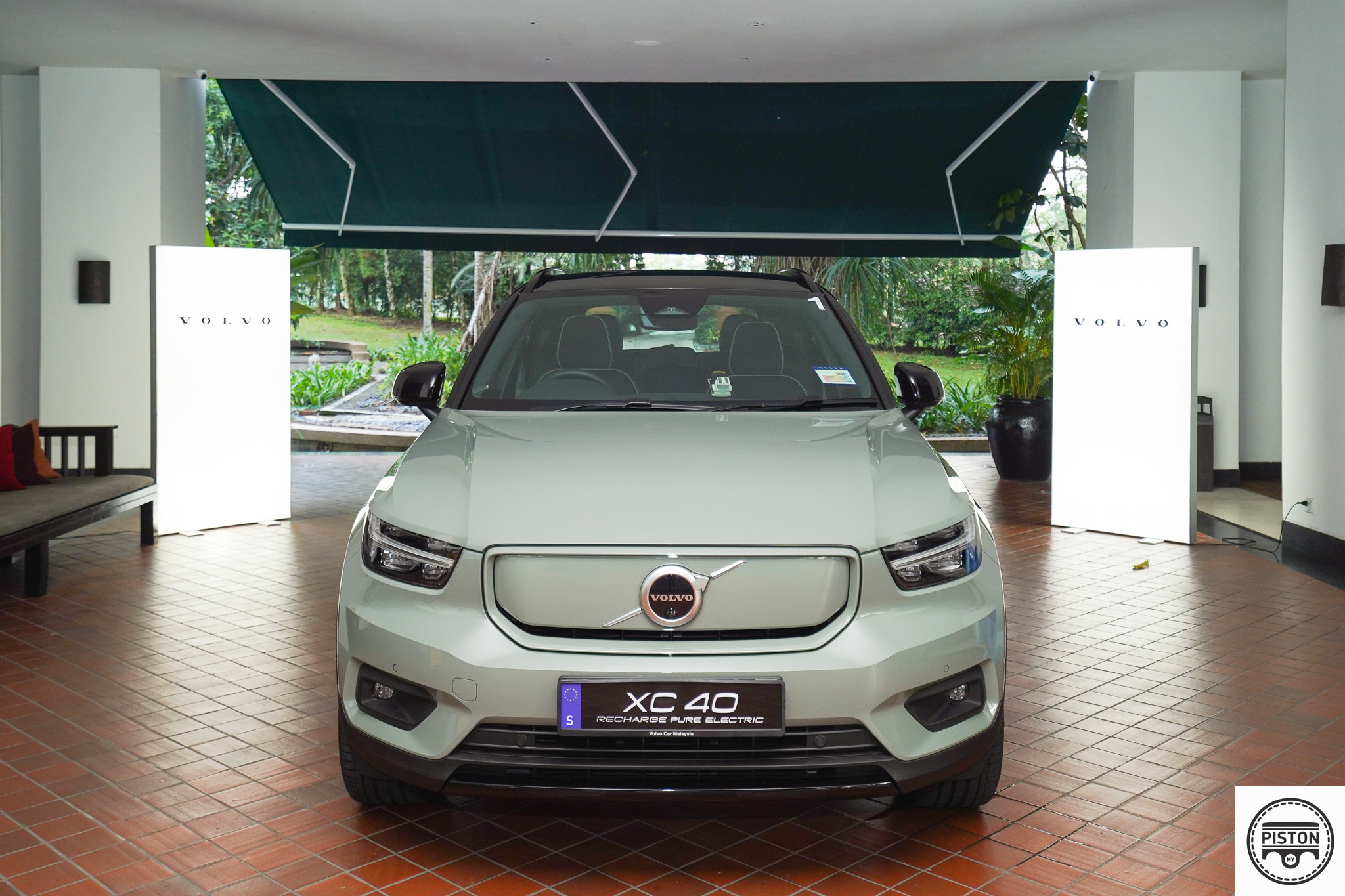
The brakes are more than capable of keeping up with all that power, but being regenerative they lack feel and that all important initial bite. So that can be scary when your brakes feel like they are not responding at first. Dig deeper and the brakes respond and the batteries get recharged.
But the Volvo XC40 RPE has a party trick up its sleeve and it is called the ‘One Pedal Drive’. What this does is that it lets you accelerate and brake using the accelerator pedal alone.
Accelerate as you normally would, and when you need to slow down, simply lift off and the brakes will be applied. The quicker you lift, the quicker and harder the brakes will be applied.
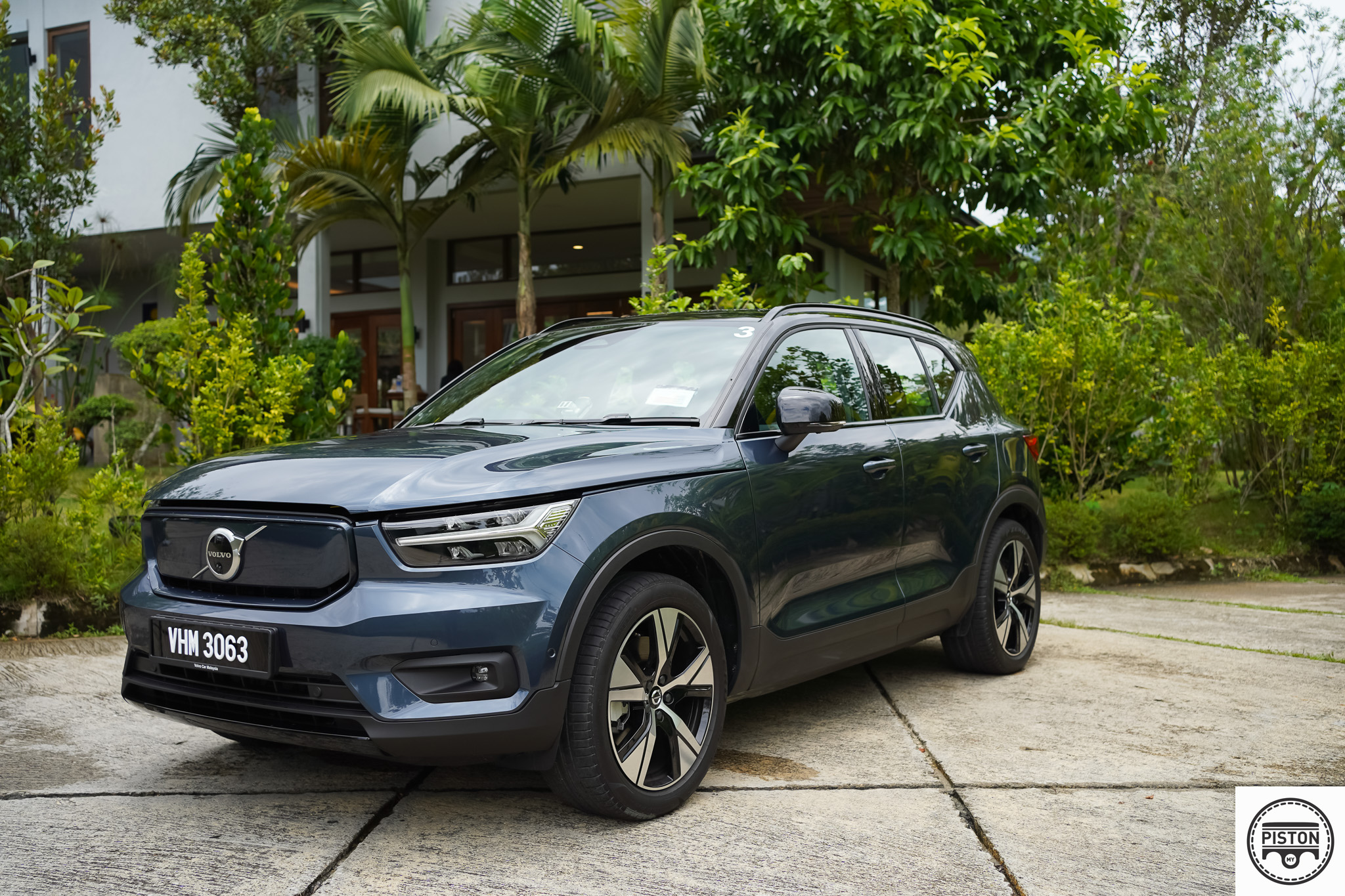
Of course you can still use the brake pedal as you normally would too, and driving using the One Pedal Drive tech takes some getting used to, but after some time you realise that it makes complete sense, especially in traffic. This tech also makes managing traffic a lot easier too because you don’t have to keep rotating your ankle between the brake and accelerator.
So, the power figures of the XC40 RPE suggest that you could have some serious fun, but the suspension and brakes don’t feel like they are up for it. And for good reason too, this is still a car designed for urban and some sub-urban use.
It is meant to keep you cuddled in subtle luxury and comfortable with the suspension disconnecting you from the horrors of Malaysian roads. It does not brilliantly though.
And now comes the big question – are we ready for electric cars and recharging our cars as we would our phones?
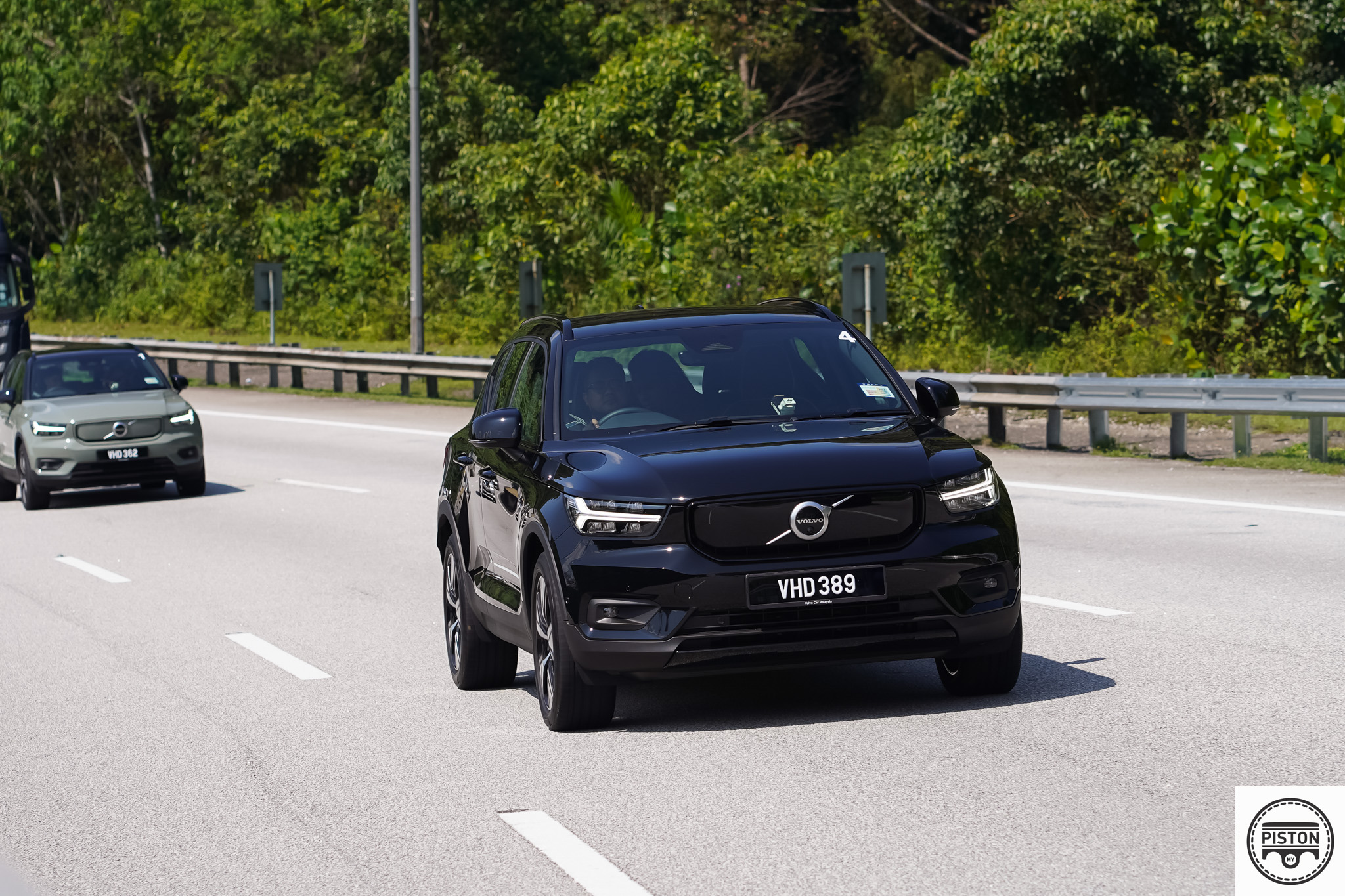
The XC40 RPE has a range of 417km on a full charge. Volvo says that if you stick to city driving, you will get a range of 420km while a combination of city and highway and mountainous driving will take that range down to 300km. Highway driving will only give you a range of 300km.
When we first started out our drive from Saujana Hotel in Subang, we were quite close to full charge, and when we returned the cars, there was still a range of 37km left.
We surely didn’t drive anywhere close to 400km that day. A quick dash to Janda Baik and back with a quick swing by Gohtong Jaya, we drove 270km at best. So Volvo is not exactly bluffing about its range.
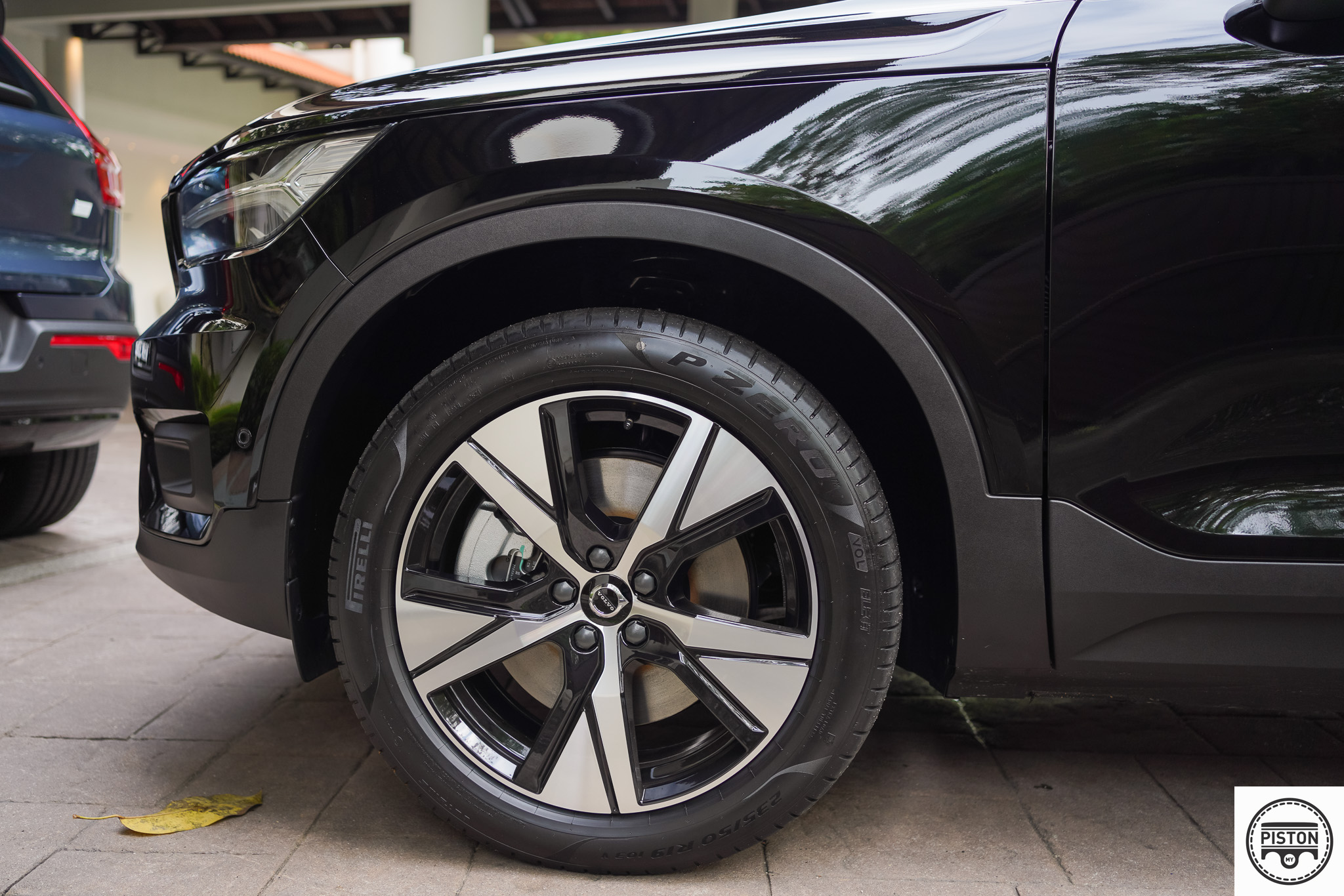
But we were driving fast and the uphill climbs required more power anyway. And that’s the thing about electric cars, it all depends on where you are going and how that will affect power usage.
Driving at a constant speed on a flat highway will not consume much power, so driving interstate along the North South highway should be fine.
And power companies such as Petronas and Shell are fast catching up and are offering recharging stations along the entire stretch of the north south highway too, so recharging and range anxiety will soon be a thing of the past.
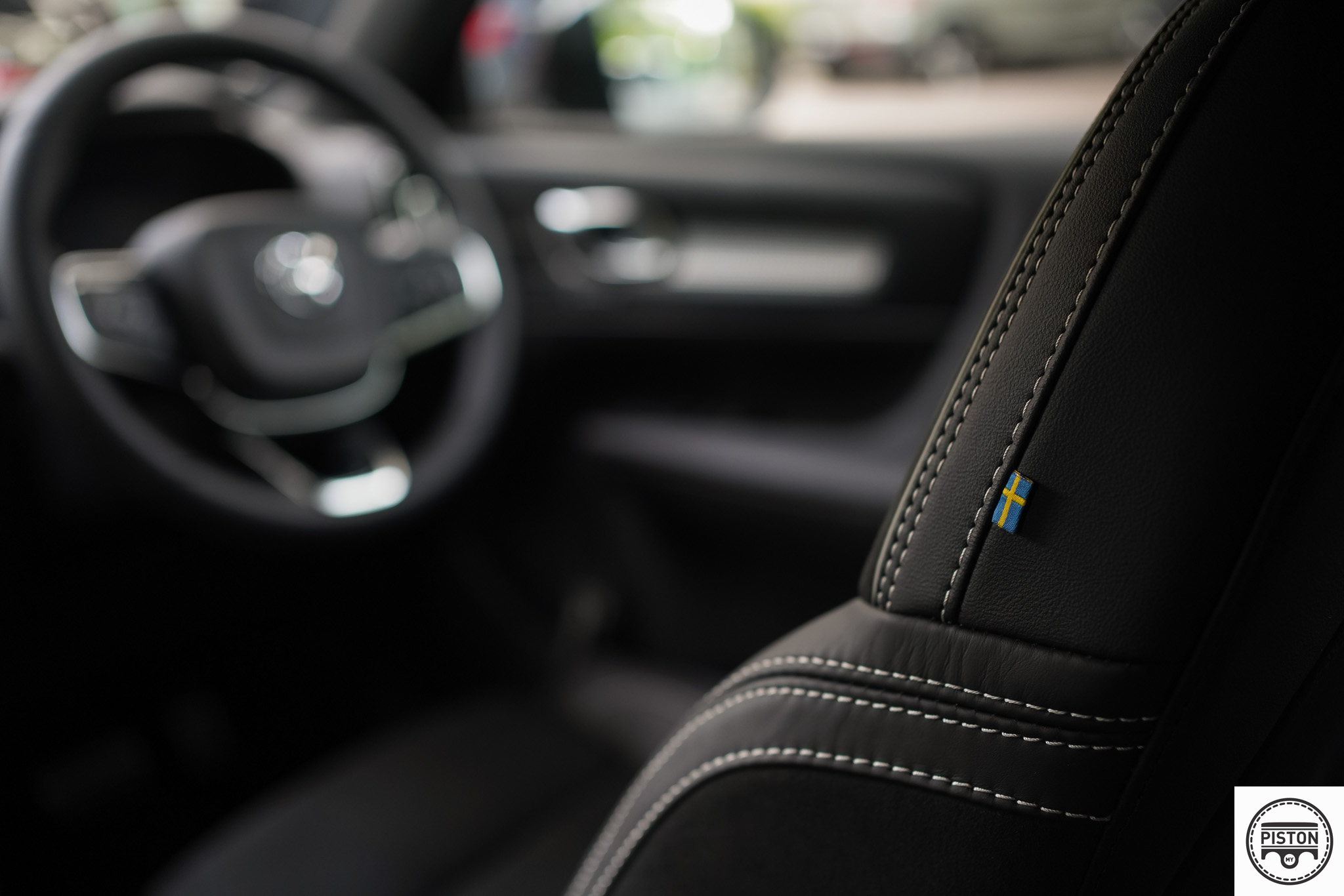
On the point of recharging, the RPE needs just 37 minutes to reach 80 per cent charge with a 150kW DC fast charger. While a regular 11kW AC socket such as the ones found in our homes will require 8 hours to reach 100 per cent charge.
So there’s still plenty of waiting around that is required to recharge your car, but that is fine if you are going to drive the car around town, unless you live in a condominium and have limited access to a charging port, then an electric car, no matter what type, is really not for you.
And so, all in all, the Volvo XC 40 Recharge Pure Electric checks all the boxes and is a fun little thing to drive and go about your daily business without burning a hole in your pocket.
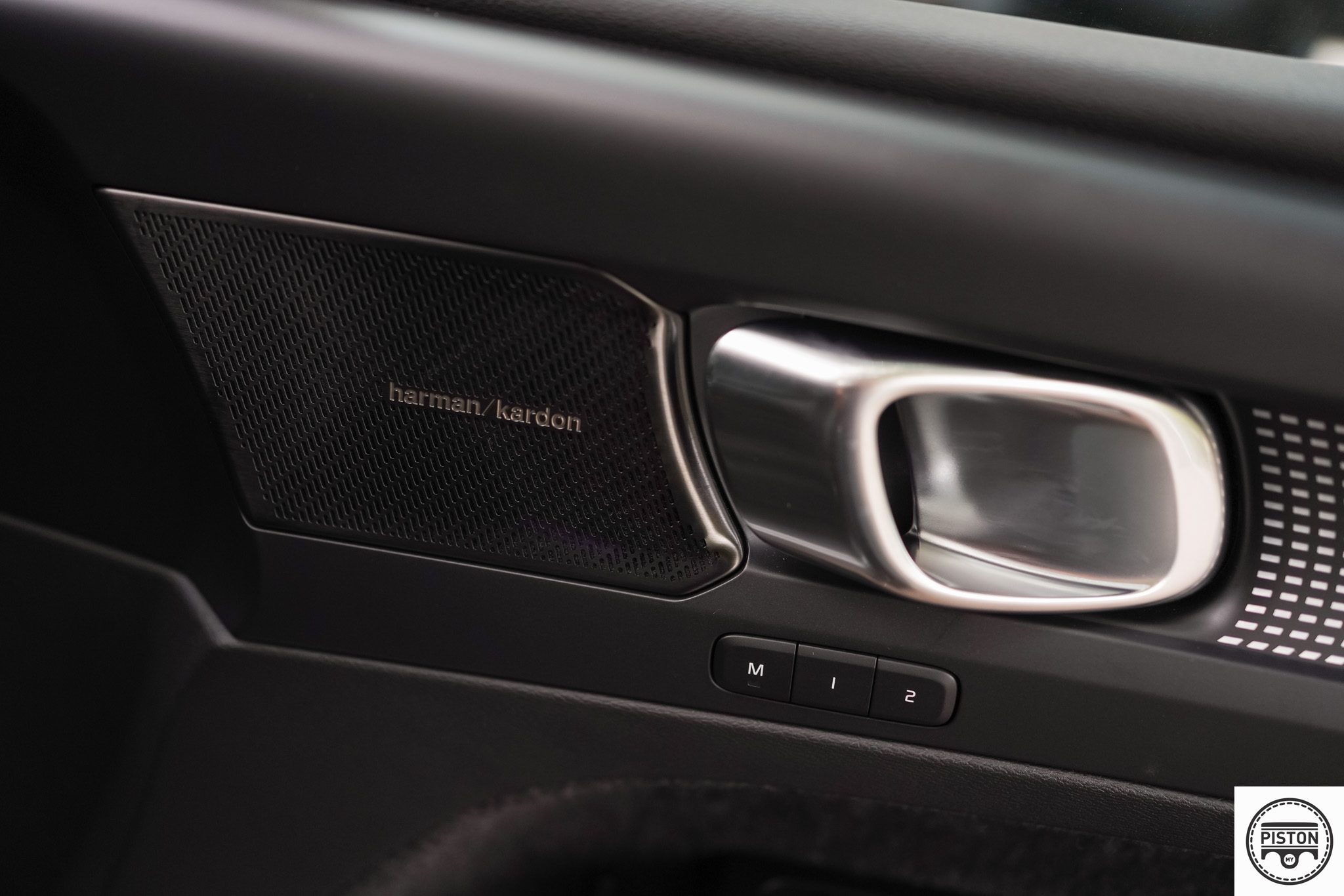
Volvo Malaysia has not announced a price for it as yet but there’s speculation that it will be in the RM250,000 range.
Volvo looks like they may just have a winner in their hands, but the only thing that could hurt the XC40 RPE is the Hyundai Ioniq 5 Max.
Volvo is a pioneer again with the first locally-assembled battery electric vehicle (BEV)
Lotus has finally joined the SUV crowd with its new Eletre (pronounced ‘El-etra’ and means ‘Coming to Life’ in some Eastern European languages) which is not only its first SUV but also the world’s first fully electric hyper SUV. Officially launched tonight at the BBC Television Centre in London, the model brings with it a significant number of firsts for the British brand – the first 5-door production model, the first model outside sportscar segments; the first lifestyle EV; and the most ‘connected’ Lotus ever.
As would be expected, advanced technologies are found throughout the car, including the most advanced active aerodynamics package claimed for any production SUV. There are also intelligent driving technologies such as the world’s first deployable Light Detection and Ranging (LiDAR) system in a production car.
The Eletre is built on Lotus’ all-new Electric Premium Architecture (EPA). The low-to-the-ground design endows it with outstanding handling, and the EPA can easily adapt to accommodate C+ to E+ vehicle class battery sizes, motors, component layouts and intelligent driving technologies. The platform will be the basis for an all-new range of premium lifestyle performance electric vehicles from Lotus.
The Eletre has a 4WD drivetrain with 2 electric motors that provide up to 600 bhp, and uses 800V dedicated electric vehicle architecture with integrated, high-voltage power distribution system. The high-density battery pack has a capacity that’s over 100 kWh and a full charge is expected to last for up to 600 kms. A 350 kW charger will provide 400 kms of range in just 20 minutes, and it also comes with the ability as standard to accept 22 kW AC charging (if available). The hyper SUV credentials come from claimed performance numbers of less than 3 seconds for 0 to 100 km/h and a top speed of 260 km/h.
The international design team was guided by Peter Horbury, who became Senior Vice President, Executive Advisor, Design, of Group Lotus last August. Horbury was the man who ‘threw the box out’ at Volvo when he designed the C70 and prior to moving to Lotus, he provided guidance for various brands in the Geely group which Lotus is part of.
The designers created a daring and dramatic new model with a cab-forward stance, long wheelbase and very short overhangs front and rear. They had newfound creative freedom with the absence of a combustion engine under the bonnet, while the short bonnet echoes the styling cues of Lotus’ iconic mid-engined layout.
A signature element of the 5103 mm long bodywork’s design is its ‘porosity’ – the aerodynamic principle of air flowing through the car as well as under, over and around it. Porosity was at the heart of the Evija’s design, is integral to the Emira, and has provided clear inspiration for the Eletre. It is most obvious where air is channelled under the leading edge of the car, emerging through two exit vents in the bonnet above.
The active front grille is formed from a network of interconnecting triangular petals that dominate the central section. Intricately designed, they remain closed when the car is at rest or when there’s a need to reduce drag during driving. They open in a distinctive pattern to feed air into the radiator, allowing the Eletre to ‘breathe’ when cooling of the electric motors, battery pack and front brakes is required. All the black components are finished in carbonfibre while the body panels are aluminium.
The rear is dominated by the unique cantilevered carbonfibre ‘floating’ split roof spoiler, a motorsport-inspired design feature that evokes race car winglets. With the central section removed, weight is saved – a very Lotus concept – and allows the LiDAR sensor to be integrated at the top of the glass. Optimised for exceptional aerodynamics, the roof spoiler channels airflow down the glass and into the active tailgate spoiler which is deployed automatically at speed. It has three distinct deployment angles, depending on the drive mode selected.
The interior has a performance-oriented and technical design which is ‘visually lightweight’ and as former F1 driver Jenson Button (who drove the car in for its debut) said, it has ultra-premium materials to offer a level of luxury that is new to Lotus. Sustainability has also been a core focus of the design team with the hard materials of carbonfibre that give a premium marble-like finish.
The cabin has four individual seats as standard, with customers also offered the more traditional 5-seat layout under a fixed panoramic glass sunroof. The cockpit and high centre console are inspired by the Emira and Evija with the triangular theme seen externally on the grille being replicated in multiple locations around the cabin.
The Lotus philosophy of light-weighting – removing material if it’s not needed – is clearly illustrated in the instrument panel. The floating wing’s central section has been taken out, echoing the design of the rear spoiler. Below the instrument panel a blade of light runs across the cabin, sitting in a ribbed channel that widens at each end to create the air vents. While it appears to be floating, the light is more than decorative and forms part of the human machine interface (HMI). It changes colour to communicate with occupants, for example, if a phonecall is received; if the cabin temperature is changed; or to reflect the vehicle’s battery charge status. Information can also be displayed to the driver via a head-up display featuring augmented reality (AR) technology.
The infotainment experience is said to set new standards in the automotive world, with pioneering and innovative use of intelligent technologies. It is a collaboration between the design team in England and the Lotus team in China, who have huge experience in the fields of User Interface (UI) and User Experience (UX). At the core of the Eletre’s UI/UX is the Lotus attribute of simplicity, which is realised through three pillars: lightweight (for both system components and the experience); intelligence (system versatility); and immersive (for interactions that excite and engage occupants). This includes the on-screen 3-dimensional world in which the car is viewed, showcasing the Eletre as the hero and adopting user experiences from the worlds of gaming and mobile technology.
While every element of the Eletre can be controlled digitally, certain key controls are duplicated with analogue switches – evidence of the simplicity for which Lotus is famed. The technical look, compact size and premium feel of the steering wheel is intended to deliver maximum comfort, performance and usability. Visually lightweight, it houses switchgear for the adaptive cruise control and infotainment system.
The standard audio system on the car comes from KEF and is composed of a 1,380W 15-speaker set-up with Uni-QTM and surround sound technology. Uni-Q dispenses with separated tweeter and mid-range speakers, instead combining both into an acoustically idealised single unit. It covers the entire mid and high-frequency sound spectrum from a single point in space, delivering a more coherent, hyper-realistic sound experience.
Technology is used for much more than infotainment on the Eletre. It is also at the heart of the car’s comprehensive suite of intelligent Advanced Driver Assistance Systems (ADAS), many of which are designed to be futureproof so new features can be enabled via Over The Air (OTA) updates. Several utilise the LiDAR system which supports end-to-end autonomous driving technology and is future-proofed for further development, achievable because of the hardware that’s already integrated. Further capability can be added via OTA software updates, as and when it is allowed by local market regulations.
Incidentally, each door mirror is replaced by an Electric Reverse Mirror Display (ERMD), which houses 3 different cameras – one for the rearview mirror, a second to help create a 360-degree view of the car from above to aid parking, and a third that’s part of the intelligent driving technologies which work in tandem with the LIDAR system.
“The Eletre is a bold and revolutionary new car, delivering on our commitment to move Lotus into completely new automotive segments as we widen our global appeal and accessibility. This is a momentous point in our history and a clear signal of our ongoing desire to transform our business. It is a true Lotus, and we’re confident it will delight performance car customers and offer a distinct alternative to the segment’s established players. The Eletre has the soul of a Lotus and the usability of an SUV. Alongside the Emira sportscar, this is the perfect two-car garage from Lotus,” said Matt Windle, Managing Director of Lotus Cars.
Pricing is not announced at this time and the Eletre will be built at a new factory in Wuhan, China. First deliveries start in 2023 with the early production going to customers in China, the UK, and Europe.
Lotus Vision80 plan to transform company on journey of global expansion
‘vRS’ is to Skoda what GTI would be to Volkswagen, the designation for high-performance versions of the various models of the Czech carmaker. The vRS story began in 2001 with the Octavia getting a 178 bhp 1.8-litre turbocharged engine, the most powerful road-legal Skoda ever offered when it was launched. It had credible performance and from that model, Skoda engineers began to always develop an extra-hot version of each model range deserving of the vRS badge.
Actually, Skoda had initially wanted to use ‘RS’ as the designation, the two letters referring to ‘Rally Sport’ which the carmaker had participated in since the 1960s. However, in the UK, they had a problem as Ford felt its RS models were already well established and did not want another manufacturer confusing customers. So rather than fight over the matter, Skoda decided to add a ‘v’ (for ‘victory’) to the RS and thus the ‘vRS’ badge was born. However, in many markets, the badge is more distinctly shown as ‘RS’ and the model also referred to as ‘RS’.
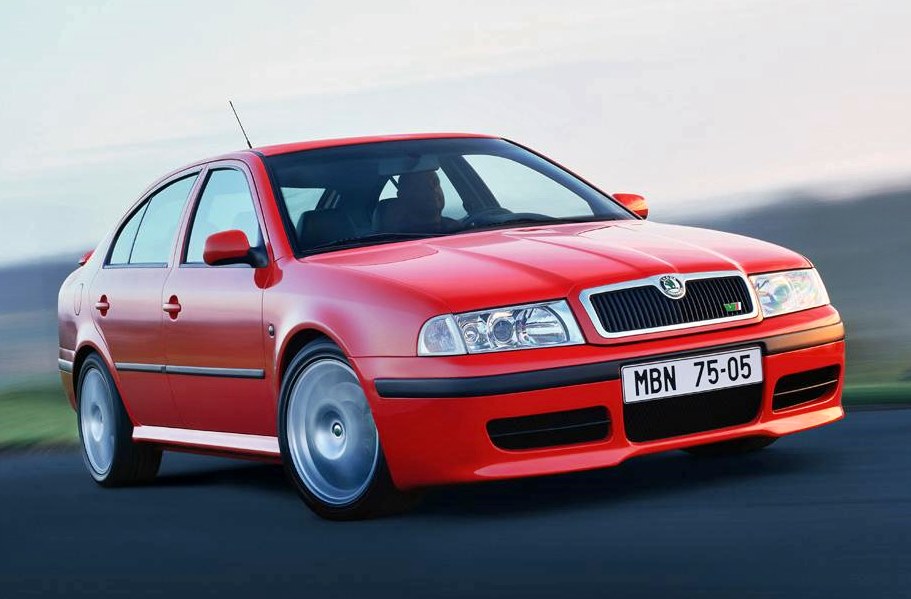
Over the years, impression vRS models have appeared in showrooms, with the first performance SUV from the brand being the Kodiaq vRS in 2019, and it had a 235-bhp twin-turbo diesel engine. This July, Skoda will launch its first all-electric model to have the vRS badge – the ENYAQ Coupe iV vRS.
Like the ENYAQ iV SUV, the new ENYAQ Coupe iV vRS also use the Volkswagen Group’s MEB modular platform developed specially for battery electric vehicles (BEVs). The ENYAQ iV models are the first modern-day Skoda vehicles with a rear motor and rear-wheel drive/dual-motor and all-wheel drive.
The ENYAQ Coupé iV vRS is powered by an 82 kWh lithium-ion battery pack providing electricity to the electric motors at the front and rear axles. The system output is 299 ps with maximum torque rated at 460 Nm and available virtually from standstill. This will give a claimed 0 to 100 km/h time of 6.5 seconds and a top speed of almost 180 km/h.
A range of almost 500 kms is claimed on a fully charged battery pack. The system is able to accept rapid charging at levels up to 135 kW, which will enable an 80% charge to be achieved within 36 minutes (depending on charging level). On a standard 7.2 kW home wallbox, however, the time to fully recharge will be around 13 hours if the battery pack is completely empty.
As would be expected with the vRS badge on it, the ENYAQ Coupe iV has a sporty appearance with gloss black surrounds for the grille, window trim and rear diffuser. Badges, tailgate lettering and the air curtain trim on the front apron are also finished in black, while the rear bumper adds a full-length red reflector – a design feature shared will all other vRS models.
Specific to the vRS version are black 20-inch Taurus wheels as standard with 21-inch Vision wheels with an anthracite finish available as an option. Both feature aerodynamically optimized plastic Aero trims. Full LED matrix headlights and Crystal Face (illuminated by 131 LEDs) complete the vRS model’s exterior design package.
Inside, the ENYAQ Coupe iV vRS is fitted with a model-specific Design Selection exclusively reserved for the sporting flagship of the range. In addition to black perforated leather sports seats with integrated headrests, grey piping and contrast stitching, the vRS also gets a leather multifunction sports steering wheel. The dashboard is upholstered in a leather-look material to match the seats and is edged with contrast stitching.
Standard equipment includes carbonfibre effect inserts on the dashboard and door trim and aluminium pedals, plus LED ambient lighting and an electrically operated boot with virtual pedal. To further enhance the responsive driving experience, Dynamic Steering is standard, complementing the sports chassis that is 15 mm lower at the front and 10 mm at the rear.
Mercedes-AMG, a part of the Mercedes-Benz Group, is celebrating its 55th anniversary this year. The company’s products have been associated with high performance, exclusivity and superlative driving dynamics and these would generally be passenger cars. However, to start off its anniversary, the company has created a special edition that is not a passenger car but a SUV. Perhaps it reflects the fact that the SUV segment is the hottest today.
The special edition is the G 63 ‘Edition 55’ which has received specific equipment and features for exclusivity. The G‑Class has enjoyed a unique position in the AMG portfolio for over 2 decades and is its ‘king of off-road performance’.
Introduced in 1999
The first production model of an AMG variant of the G‑Class was introduced in 1999 to mark the 20th anniversary of the off-road legend. The G 55 AMG marked the beginning of a new, highly successful chapter in G‑Class history. In 2002, the G 63 AMG set new standards. It was the first time a 12-cylinder engine had been used in the G‑Class. This was followed in 2004 by the G 55 AMG with a V8 supercharged engine, and in 2012 with the G 65 AMG that has a 1,000 Nm V12 engine. The current Mercedes‑AMG G 63 continues the success story.
The Edition 55 is available in obsidian black metallic or G manufaktur opalite white bright paint. The colours on both sides of the vehicle are coordinated with the AMG emblem and the suggested AMG rhombus. Distinctive contrasts are provided by the 22‑inch AMG forged wheels in a cross-spoke design with a matt tantalum grey paint finish and a high-sheen rim flange, as well as the AMG Night Package and the AMG Night package II. The fuel filler cap in silver chrome with AMG lettering also bears witness to great attention to detail.
The interior is characterised by the contrast of black and red. Stainless steel doorsill trims with red illuminated AMG lettering welcome the occupants who step onto black AMG floor mats made of high-quality velour. The mats feature red contrasting stitching and ‘Edition 55’ lettering woven in red.
The AMG Performance steering wheel in DINAMICA microfibre also commemorates the anniversary with the ‘AMG’ and ‘55’ badges, making the special model an exclusive collector’s item. Also exclusive are the AMG seats with a specific design and upholstered in 2-tone nappa leather in classic red/black. The exclusive ambience of the interior is rounded off by the AMG trim elements in matt carbonfibre.
The scope of delivery includes a customised AMG Indoor Car Cover. With its breathable outer skin made of tear-resistant synthetic fibre fabric and antistatic inner fabric made of flannel, it protects the vehicle in the garage from dust and scratches.
The AMG story
AMG was founded by two men – Hans Werner Aufrecht and Erhard Melcher – in 1967. Both men were engine tuners and car customisers, and they turned Mercedes-Benz models into high-performance machines. Their fame took a big leap when they developed a Mercedes-Benz 300SEL for racing. With its 6.8-litre engine, it created history when it finished second at the 1071 24 Hours of Spa, beating much lighter rivals.
Their specialisation in Mercedes-Benz cars brought them closer to the carmaker and in time, their work was recognised as being of such high quality that Mercedes-Benz allowed its dealerships to sell AMG models, the first being the 225 bhp 190 E AMG in the late 1980s.
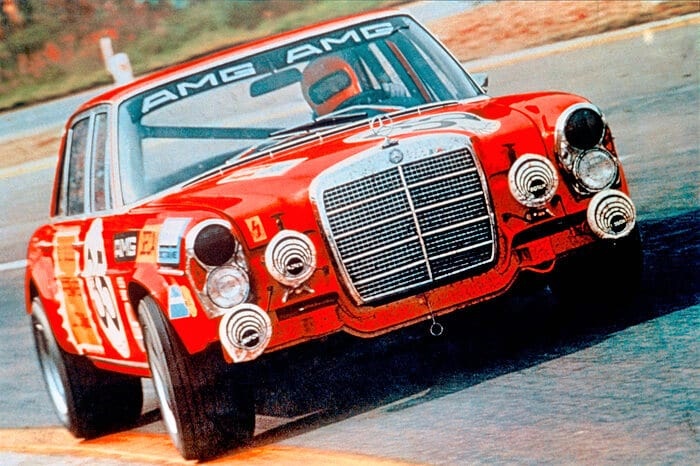
Just a few years into the decade of the 1990s, Daimler-Benz brought AMG into its group with a controlling stake. This saw the birth of the Mercedes-AMG brand as a high-performance sub-brand while AMG became the unit that looked after everything to do with high-performance products, including motorsports. Eventually, most models would have AMG Line versions which had additional sporty equipment designed by the subsidiary
From a two-man start-up in 1967 to a state-of-the-art development site including its own engine manufacturing facility today, Mercedes-AMG continues to build on its position as a highly successful performance and sportscar brand through numerous successes in motorsport and the development of unique road cars.
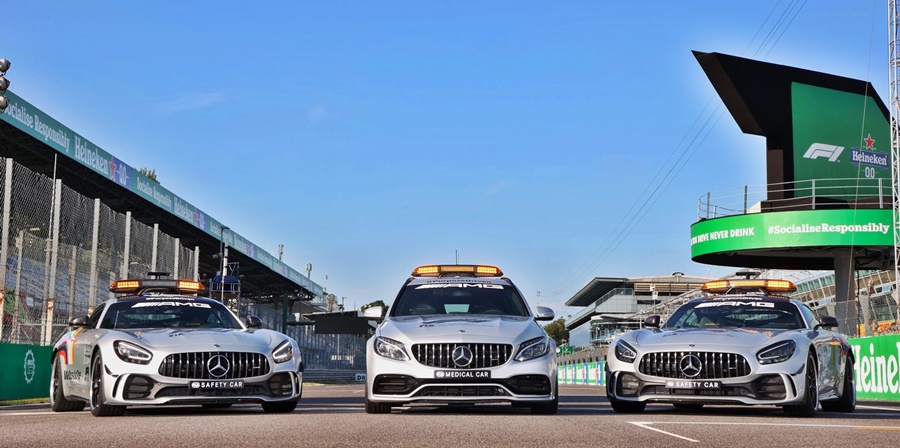
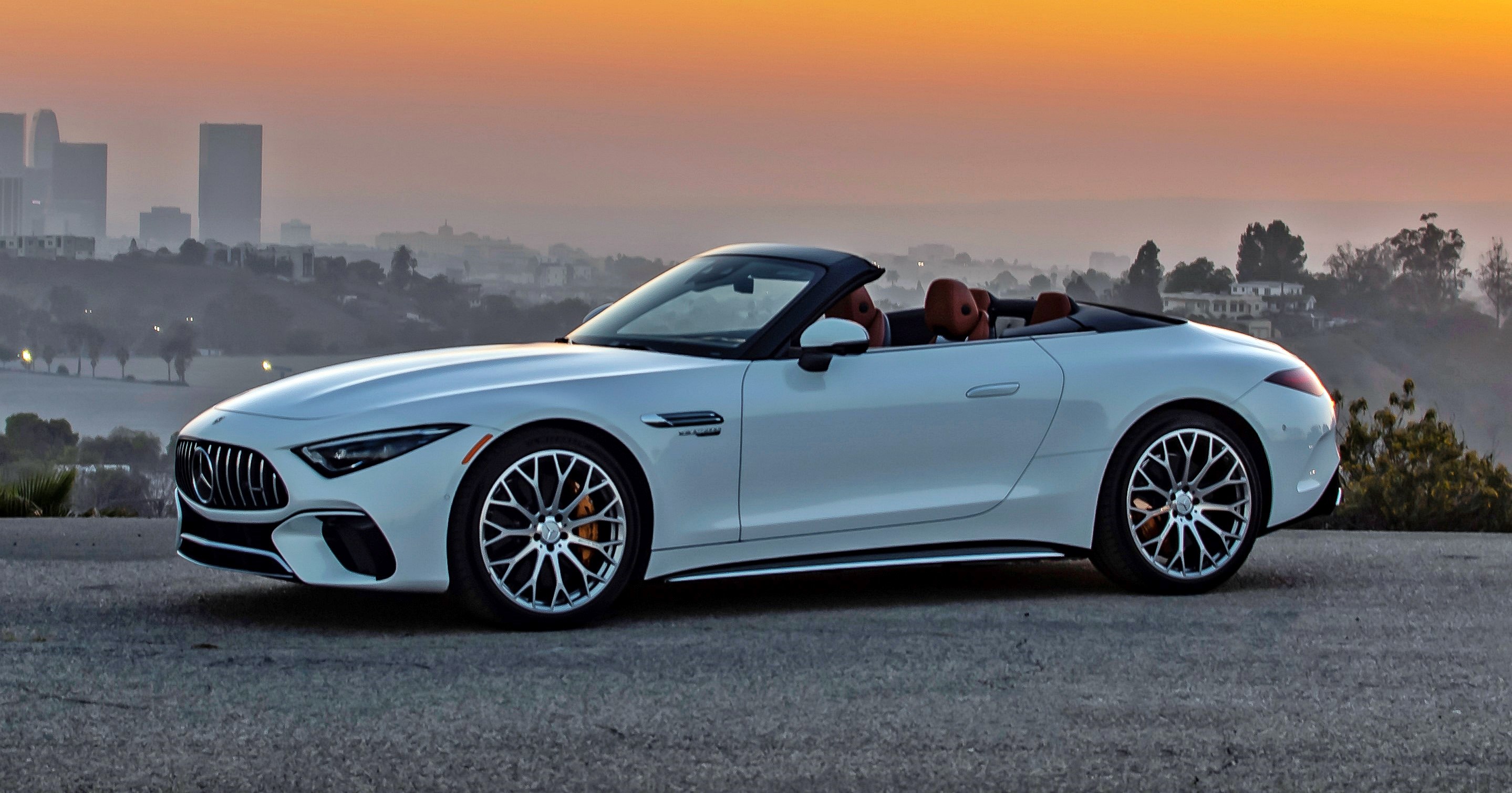
The current Mercedes‑AMG portfolio comprises more than 50 models with a power range from 306 ps to 843 ps, and includes its first performance hybrid – GT 63 S E PERFORMANCE. Apart from models derived from the Mercedes-Benz range, Mercedes-AMG has also independently developed sportscars such as the GT 4‑Door model and the new SL.
Moving into the era of electrification, Mercedes‑AMG will offer E PERFORMANCE – performance hybrids with an independent drive layout and technology from Formula 1. The portfolio includes all-electric AMG derivatives based on the Mercedes-Benz Group’s own EVA2 platform. In the near future, completely independent battery-electric AMG models will also follow, which will be based on the new electrical architecture (AMG.EA) which has been developed completely in-house.
Bugatti will build only 10 units of the Centodieci, the most exclusive model from the French brand. And even though it is a small number, the cost and time for engineering, development and testing has been no less than for any other model. In fact, if one were to use the 10-unit production run as a basis, it is probably the most expensive model in development cost.
Over the course of many months, Bugatti test drivers and engineers have carried out all types of testing on various roads and tracks and in various conditions to collect technical data on performance and reliability. To date, the production-based prototype of the Centodieci has completed over 50,000 test kilometres in total following final endurance testing.
The white prototype has been run virtually non-stop with 3 drivers taking turns. It may sound like a fun job being able to drive fast for long periods (and no worries about speed-traps!), but it is a serious one. Endurance testing requires drivers to have a high level of technical knowledge, maximum concentration, and sensitivity. During driving, they must examine all functions of the hypercar, registering and logging every minor issue. They drive day and night on different track profiles and across every speed range, from stop-and-go pace to top speed.
Even after hours going round and round the same high-speed track at Nardo in Italy, they must be able to pick up the slightest of unusual noises, movements, and irregularities. Everything is inspected one final time: driving on different surfaces – both wet and dry – testing every little steering movement, braking, acceleration, cornering load, and functionality of the driver assistance systems.

“With its high-speed circuit and handling course, the Nardo test centre provides the ideal conditions for intensive endurance tests,” said Steffen Leicht, the man responsible for endurance testing at Bugatti. The 12.6-km circular track with a diameter of 4 kms is considered the fastest automotive circuit in the world – ideal for the 380 km/h Centodieci.
It also has a 6.2-km handling course on the inner section that enables drivers to check performance and dynamic behaviour at the highest load levels and with longitudinal and transverse dynamics. In total, the facility has 70 kms of roads with different surfaces, enabling extensive testing and inspection of all vehicle components.
During endurance testing, the Centodieci covered up to 1,200 kms each day, interrupted only by technical checks, refuelling, and driver changes. Throughout the entire time, Bugatti’s engineers analyze the engine and vehicle data and make adjustments where necessary. “We assess every element on the vehicle one last time, paying particular attention to functionality and durability before the first Centodieci cars go into production,” explained Carl Heilenkotter, project manager responsible for one-off and few-off projects at Bugatti.
“All components must interact perfectly with one another and be capable of withstanding any kind of overloading. They must also harmonize in a stable and safe manner even when subjected to the most severe handling situations,” he explained.
The testing that is carried out is no different from what Bugatti has been doing for more than 100 years to ensure the highest quality for its cars. However, new technologies have enabled the engineers to carry out testing in more sophisticated ways today and to go well beyond the legal and expected requirements.
“The Centodieci is deliberately driven to its limits in order to guarantee reliable handling at the highest level, even in extreme situations. Even though most cars never enter this range, it is nonetheless tested. This is the philosophy of the brand and that is why we put such a huge amount of effort into all this testing. Bugatti is committed to the highest quality standards, durability, and customer satisfaction,” said Heilenkotter. “The endurance tests in Nardo represent the final act of the extensive trials.”
As soon as the final assessment has been completed, the first of the highly exclusive vehicles – each with a starting price of 8 million euros (about RM37.17 million) – can go into production. All the 10 hypercars – which have 8-litre 16-cylinder 1,600 ps engines – will be completed in the coming months and their owners will receive them later this year.
FEATURE – The German engine that was born on a Japanese bullet-train
© Copyright – Piston.my 2024 Trademarks belong to their respective owners. All rights reserved